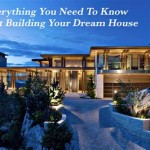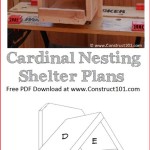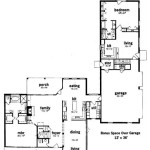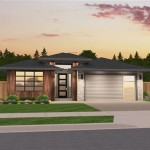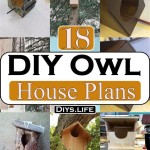Easy to build dog house plans provide a simple and affordable solution for dog owners to create comfortable and weather-resistant shelters for their canine companions. These plans typically consist of step-by-step instructions and diagrams that guide users through the construction process, making it accessible to even novice builders.
Building a dog house can offer numerous benefits. It provides a designated space for the dog, both for shelter and privacy. Well-constructed dog houses can protect pets from extreme weather conditions, such as rain, wind, and snow, ensuring their safety and well-being.
Moving forward, this article will delve into a range of easy to build dog house plans, providing detailed instructions and guidance to help you construct a comfortable and durable shelter for your furry friend.
When selecting or creating easy to build dog house plans, consider these key points:
- Appropriate size for your dog
- Durable and weather-resistant materials
- Proper ventilation and insulation
- Easy to clean and maintain
- Elevated design for drainage
- Sloped roof for water runoff
- Raised floor to prevent dampness
- Rounded corners for safety
- Attractive design that complements your home
By incorporating these elements, you can ensure your dog house provides a comfortable and protective shelter for your canine companion.
Appropriate size for your dog
Determining the appropriate size for your dog’s house is crucial for ensuring their comfort and well-being. A house that is too small will be cramped and uncomfortable, while one that is too large will be difficult to heat and may not provide a sense of security for your dog.
To determine the ideal dimensions, measure your dog from the tip of their nose to the base of their tail. This measurement will give you the length of the house. For the width, measure your dog’s height at the shoulder. Add 2 to 4 inches to both the length and width to allow for comfortable movement and insulation.
The height of the house should be tall enough for your dog to stand up and turn around comfortably. As a general rule, the height should be about 6 inches taller than your dog’s height at the shoulder.
Consider the size of your dog’s breed and their activity level when choosing the dimensions of the house. For example, a large, active dog will need a more spacious house than a small, inactive dog.
Durable and weather-resistant materials
When selecting materials for your dog house, durability and weather resistance are key considerations. The materials you choose will impact the longevity and functionality of the house, ensuring your dog’s comfort and protection from the elements.
Treated wood: Pressure-treated lumber is an excellent choice for dog houses as it is resistant to rot, decay, and insects. It is also durable and can withstand harsh weather conditions. However, it is important to choose treated wood that is specifically labeled for outdoor use, as some types may contain chemicals that are harmful to dogs.
Cedar: Cedar is a naturally weather-resistant wood that is also resistant to insects and decay. It is a lightweight and durable option that is easy to work with. Cedar is a more expensive option than treated wood, but it is a good investment if you are looking for a long-lasting dog house.
Plastic: Plastic dog houses are durable, weather-resistant, and easy to clean. They are also lightweight and portable, making them a good option for travel or for dogs who spend a lot of time outdoors. However, plastic dog houses can be more expensive than wood houses, and they may not be as well-insulated.
Proper ventilation and insulation
Proper ventilation and insulation are essential for maintaining a comfortable and healthy environment inside your dog house. Ventilation allows fresh air to circulate, preventing the buildup of moisture and odors. Insulation helps to regulate the temperature inside the house, keeping your dog warm in the winter and cool in the summer.
- Ventilation: Provide adequate ventilation by installing vents in the walls or roof of the dog house. Vents should be placed on opposite sides of the house to allow for cross-ventilation. Avoid placing vents directly in front of the entrance, as this can create drafts.
- Insulation: Insulate the walls and roof of the dog house using foam insulation, straw, or other insulating materials. Insulation will help to keep the house warm in the winter and cool in the summer. Avoid using materials that can absorb moisture, such as fiberglass insulation, as this can lead to mold and mildew growth.
By providing proper ventilation and insulation, you can create a comfortable and healthy environment for your dog, regardless of the weather conditions.
Easy to clean and maintain
Keeping your dog house clean and well-maintained is essential for ensuring the health and comfort of your dog. A clean dog house will help to prevent the buildup of dirt, debris, and parasites, and it will also be more inviting for your dog to use.
- Use materials that are easy to clean: Choose materials for your dog house that are smooth and non-porous, such as plastic or metal. These materials are easy to wipe down and disinfect, making it quick and easy to keep the house clean.
- Make sure the house is well-ventilated: Ventilation is important for preventing the buildup of moisture and odors inside the dog house. Install vents in the walls or roof of the house to allow fresh air to circulate.
- Provide a removable floor: A removable floor makes it easy to clean the inside of the dog house. Simply remove the floor and sweep or hose it down to remove dirt and debris.
- Keep the house off the ground: Placing the dog house on a raised platform or legs will help to prevent moisture from seeping into the house and will also make it easier to clean the underside of the house.
By following these tips, you can make it easy to keep your dog house clean and well-maintained, ensuring a healthy and comfortable environment for your dog.
Elevated design for drainage
Elevating your dog house off the ground is important for drainage and preventing moisture from seeping into the house. Moisture can cause the house to rot and become moldy, which can be harmful to your dog’s health. Additionally, an elevated design will help to keep your dog dry and comfortable in wet weather.
- Use a raised platform or legs: The simplest way to elevate your dog house is to place it on a raised platform or legs. This will create a space between the bottom of the house and the ground, allowing water to drain away.
- Build the house on a slope: If you are building your dog house from scratch, you can incorporate a slope into the design. This will allow water to run off the roof and away from the house.
- Install a drainpipe: If your dog house has a flat roof, you can install a drainpipe to channel water away from the house. The drainpipe should be directed to a downspout or other drainage system.
- Use a waterproof sealant: Once your dog house is elevated, you should seal any gaps or cracks in the walls and roof to prevent water from seeping in.
By following these tips, you can ensure that your dog house is well-drained and protected from the elements, providing a comfortable and healthy environment for your dog.
Sloped roof for water runoff
A sloped roof is an important feature of any dog house, as it helps to shed water and prevent leaks. Water can damage the structure of the house and create a damp, unhealthy environment for your dog. A sloped roof will help to keep your dog dry and comfortable, even in rainy or snowy weather.
When designing your dog house, be sure to choose a roof pitch that is appropriate for your climate. A steeper pitch will shed water more effectively, but it will also require more materials and may be more difficult to build. A shallower pitch will be easier to build and will require less materials, but it may not shed water as effectively.
In addition to the pitch of the roof, you should also consider the type of roofing material you will use. Asphalt shingles are a popular and affordable option, but they may not be the best choice for a dog house as they can be damaged by dogs’ claws. Metal roofing is a more durable option, but it can be more expensive. You may also want to consider using a waterproof sealant to help protect the roof from leaks.
Once you have chosen a roof pitch and roofing material, you can begin building the roof of your dog house. Be sure to follow the instructions carefully and make sure that the roof is properly sealed to prevent leaks.
By following these tips, you can build a sloped roof for your dog house that will help to shed water and keep your dog dry and comfortable.
Raised floor to prevent dampness
Dampness is a common problem in dog houses, especially those that are placed on the ground. Dampness can cause the house to rot and become moldy, which can be harmful to your dog’s health. A raised floor can help to prevent dampness by creating a space between the bottom of the house and the ground, allowing air to circulate and moisture to evaporate.
- Prevents water damage: A raised floor will help to prevent water from seeping into the dog house and damaging the structure. This is especially important in areas that experience heavy rainfall or flooding.
- Reduces mold and mildew growth: Dampness can lead to the growth of mold and mildew, which can be harmful to your dog’s health. A raised floor will help to prevent mold and mildew growth by creating a drier environment inside the house.
- Improves air circulation: A raised floor will allow air to circulate beneath the dog house, which will help to keep the house dry and comfortable. This is especially important in warm weather, as it will help to prevent your dog from overheating.
- Makes cleaning easier: A raised floor will make it easier to clean the dog house, as you will be able to sweep or hose down the floor without having to move the entire house.
When building a raised floor for your dog house, be sure to use treated lumber or other moisture-resistant materials. You should also make sure that the floor is at least 6 inches off the ground to allow for adequate air circulation.
Rounded corners for safety
Rounded corners are an important safety feature for dog houses, as they help to prevent injuries to your dog. Sharp corners can be dangerous, especially for puppies and older dogs who may be more prone to accidents. Rounded corners will help to protect your dog from cuts, scrapes, and other injuries.
In addition to being safer for your dog, rounded corners also give the dog house a more finished and professional look. A dog house with rounded corners is more likely to complement your home’s dcor and will be a more inviting place for your dog to spend time.
There are a few different ways to create rounded corners on a dog house. One way is to use a jigsaw to cut the corners of the plywood or other material you are using to build the house. Another way is to use a router to round the corners. If you are not comfortable using power tools, you can also use a hand saw to cut the corners and then sand them smooth.
No matter which method you choose, be sure to take your time and create smooth, rounded corners. This will help to ensure that your dog house is safe and comfortable for your furry friend.
Attractive design that complements your home
The design of your dog house should complement your home’s architecture and landscaping. A well-designed dog house can be a beautiful addition to your yard, and it can also provide your dog with a comfortable and safe place to spend time.
- Choose a style that matches your home: If your home has a traditional style, you may want to choose a dog house with a classic design. If your home has a more modern style, you may want to choose a dog house with a more contemporary design.
- Consider the color of your home: The color of your dog house should complement the color of your home. If your home is painted a light color, you may want to choose a dog house that is painted a darker color. If your home is painted a dark color, you may want to choose a dog house that is painted a lighter color.
- Think about the size of your dog house: The size of your dog house should be proportionate to the size of your home. A small dog house will look out of place in a large yard, and a large dog house will look out of place in a small yard.
- Add personal touches: You can add personal touches to your dog house to make it more unique. For example, you can paint the dog house your dog’s favorite color, or you can add a decal of your dog’s name to the side of the house.
By following these tips, you can choose a dog house that is both attractive and functional. A well-designed dog house will be a beautiful addition to your yard, and it will provide your dog with a comfortable and safe place to spend time.






:max_bytes(150000):strip_icc()/IMG_2589-5a202f1c7d4be800191a3845.jpg)



Related Posts

